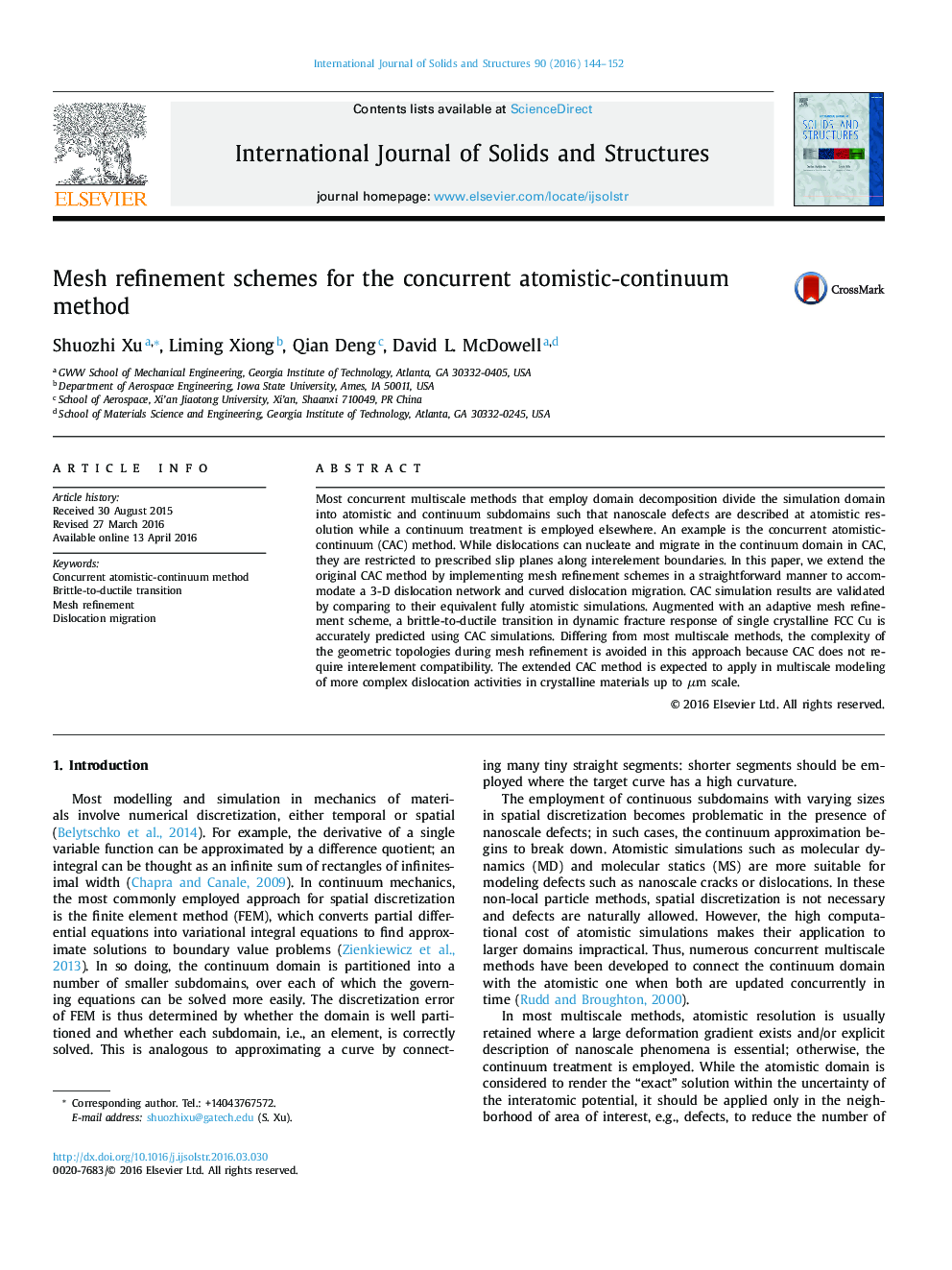| Article ID | Journal | Published Year | Pages | File Type |
|---|---|---|---|---|
| 277136 | International Journal of Solids and Structures | 2016 | 9 Pages |
Most concurrent multiscale methods that employ domain decomposition divide the simulation domain into atomistic and continuum subdomains such that nanoscale defects are described at atomistic resolution while a continuum treatment is employed elsewhere. An example is the concurrent atomistic-continuum (CAC) method. While dislocations can nucleate and migrate in the continuum domain in CAC, they are restricted to prescribed slip planes along interelement boundaries. In this paper, we extend the original CAC method by implementing mesh refinement schemes in a straightforward manner to accommodate a 3-D dislocation network and curved dislocation migration. CAC simulation results are validated by comparing to their equivalent fully atomistic simulations. Augmented with an adaptive mesh refinement scheme, a brittle-to-ductile transition in dynamic fracture response of single crystalline FCC Cu is accurately predicted using CAC simulations. Differing from most multiscale methods, the complexity of the geometric topologies during mesh refinement is avoided in this approach because CAC does not require interelement compatibility. The extended CAC method is expected to apply in multiscale modeling of more complex dislocation activities in crystalline materials up to μm scale.
